JOURNAL
Fighting for plus-size representation in fashion schools. When Lucinda Graham enrolled on her Fashion, Textile, Art & Design course, she already had a fraught relationship with her body.
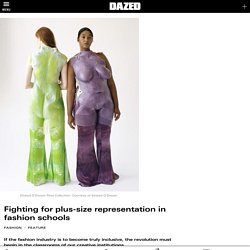
“I had a complicated past with eating disorders and compulsive exercising,” the 23-year-old recalls. “Earlier in the course, I often felt out of place as a 5”9, size 16 woman – especially as all the female mannequins resembled prepubescent teens.” Graham has worked to overcome her issues, and helps others to do the same – she creates clothes for her own body, and has become a mental health and body image advocate in the process. Her initial feelings, though, remain commonplace. Much has been written about the pressures of fashion education, particularly in recent years.
Consommer local, consommer solidaire. D’abord, il y a eu les eaux des canaux vénitiens qui ont retrouvé leur clarté et leurs bancs de poissons.

Puis les dauphins sont revenus dans le port industriel sarde de Cagliari. Publié le 20 mars 2020 à 6h21 ✓ Lien copié Marie-Claude Lortie La Presse Et ensuite jeudi, un autre phénomène positif issu de la crise a débarqué sur nos écrans pendant le point de presse quotidien du premier ministre François Legault.
How the Fashion World Is Stepping Up to Help Combat COVID-19. The rapid spread of COVID-19 presents an unprecedented challenge to people across the globe.
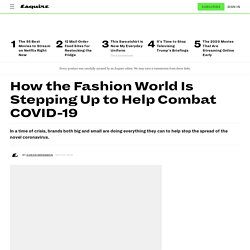
Along with its tragic human toll, the virus has provoked mass panic, sending the markets tumbling to historic lows and causing dramatic shortages in products even tangentially related to the outbreak. But the virus has also prompted displays of heroism on an equally unprecedented scale, a small but crucial reminder that in times of true crisis there is no more indefatigable force than the human spirit. Over the last couple of months, corporations with the means to help have been rising to the occasion, pledging millions of dollars to assist the effort in any way they can. As the spread of COVID-19 reaches pandemic-level proportions, key players in the fashion industry are getting involved to do their part, from funding efforts to fight the virus to converting manufacturing facilities to better suit the needs of hospitals and healthcare workers around the world.
Stay safe, folks.
Toronto's hottest club is online. The dance floor is one of the best community-building spaces we have.

Weaving with Pixels: Why Lisa Lang Thinks 19th-Century Technology Can Change the Future of Fashion. "Once I understand the soul of a machine, then I can talk with it," says Lisa Lang.

As the founder of Elektrocouture, a fashion company that melds traditional craft and technology to create jewelry and clothing embedded with glowing electronics, Lang has had plenty of interesting conversations with machines—and she takes particular pleasure in introducing them to other creative people. "I'm a bit of a fusionist—I bring technology and design together," she says. "I talk and work with very different people—like machine engineers, painters, astronauts, robots and fashion designers. I listen to their stories and knowledge and in the end, I bring them together.
« Parasite », la lutte des classes vue par Bong Joon-ho. Vous ne connaissez pas Bong Joon-ho ?
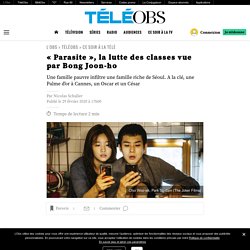
Ses familles timbrées et ses personnages de fêlés traversés par la lumière ?
1000MORCEAUX (@1000morceaux)
Le cuir de raisin, l’alternative végétale au cuir animal. Le cuir dit traditionnel est réalisé avec de la peau d’animaux provenant essentiellement d’élevage.Après l’abattage, la peau subit un certain nombre de traitements avant d’être achetée par des négociants puis acheminée vers des tanneries afin de devenir du cuir.
This new vegan leather opens the door for current and future brands to remove gradually the use of real leather into their design. This option offers a realistic design and is cruelty/animal-free. A perfect way to satisfy everyone. – sassxmao
De nombreux produits toxiques sont utilisés tout au long du processus de travail de la peau, entraînant dans le cas de certaines tanneries non encadrées, de véritables désastres écologiques.
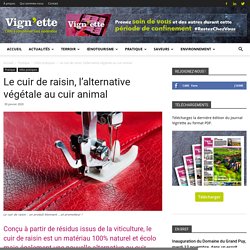
The Fashion World, Upended by Coronavirus. PARIS — Twice a year, the luxury fashion houses of the world present their ready-to-wear clothing for the coming season.
Coronavirus has lead to important consequences all around the globe. Sadly, Fashion hasn't escaped its grip. In our quarantine situation, it will be difficult for clothing stores to stay open. Moreover, it's affecting fashion shows. Indeed, it's currently impossible for fashion shows to happen to make a stop in the spread of the virus. A real trend retarder... But also a trend creator. In answer to this hubbub, fashion designers are creating some sick looks. Another proof that the social context is a huge influence on fashion. – sassxmao
This creates an international traveling circus of retailers and reporters, high-spending customers and Instagram influencers, executives and a small army of public-relations professionals, many traveling from New York to London to Milan and finally to Paris.
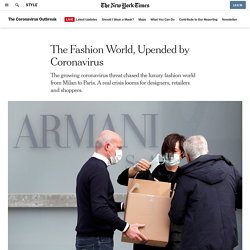
What high fashion is doing about cultural appropriation. Image copyright Getty Images/ Gucci/ D&G Dolce & Gabbana trivialising Chinese culture in a campaign in 2018.
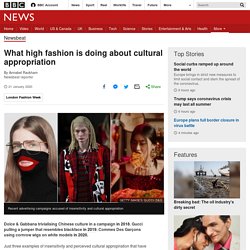
Gucci pulling a jumper that resembles blackface in 2019. Commes Des Garçons using cornrow wigs on white models in 2020.
Sondage Léger : les Québécois appuient les causes autochtones. C'est ce que révèle un sondage Léger réalisé pour le compte de La Presse canadienne.

Le sondage a été effectué entre le 8 février et le 2 mars auprès de 1540 Canadiens, dont 404 Québécois, issus d'un échantillon Internet de 400 000 Canadiens dont Léger se sert dans ses sondages. Pareille méthodologie ne permet pas le calcul de marges d'erreur. Le sondeur a donc fait son travail alors que la crise provoquée par l'opposition de chefs héréditaires wet'suwet'en à un gazoduc en Colombie-Britannique battait son plein.
Question après question, les Québécois se démarquent, particulièrement par rapport aux personnes sondées dans l'ouest du pays. Ils sont 60 %, au Québec, à estimer que les revendications territoriales des peuples autochtones sont valides, comparativement à 49 % en Alberta. De la même manière, 80 % des Québécois qui ont répondu au sondage croient que le gouvernement canadien devrait régler les différends avec les peuples autochtones, par rapport à 70 % dans le reste du Canada.
Inside photographer Renell Medrano’s euphoric debut solo show, Pampara. Should we ration fashion? Lessons in sustainability from the second world war. A wartime-style economy is often cited as a potential path towards meeting our international carbon emissions agreements.
Bringing back the idea of rationing fashion demonstrates the major consequences of the fashion industry and, especially, the textile industry on the environment. It pushes young designers to think about ways to include a ``thrift`` and sustainable look and approach to their creativity. – sassxmao
In debates about the fashion industry, the idea of a shift as radical as the one that took place in the second world war is frequently mooted in conversations about sustainability. Clearly this is a problematic comparison. It is important not to romanticise the violence of war or glamorise the reality of political states of emergency. But there is a reason the idea keeps being raised. The war is the most recent time in which the economy was overhauled in the face of an existential threat.
**A*_N*¨A^**L^*^*C*^A^*N^*C*^E^*R^*2009.










